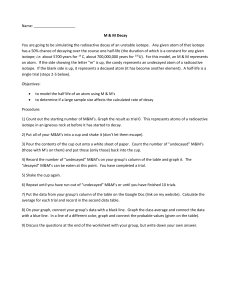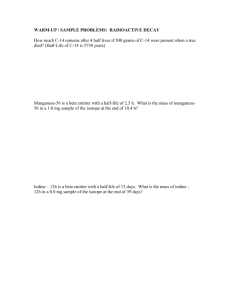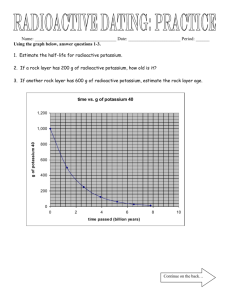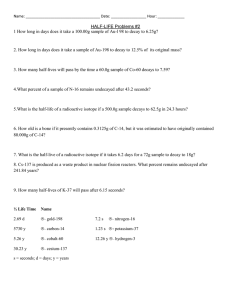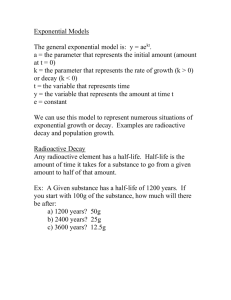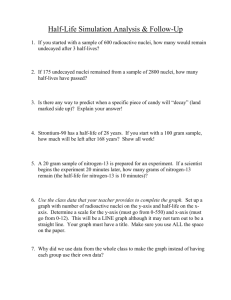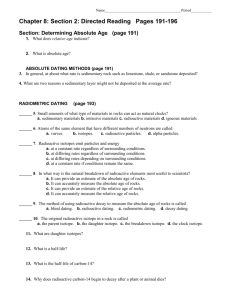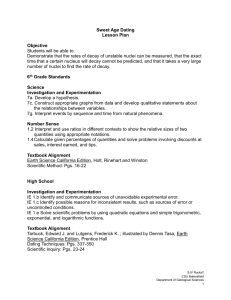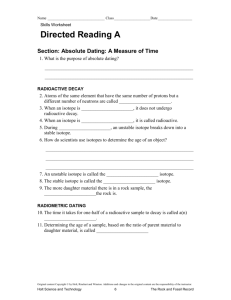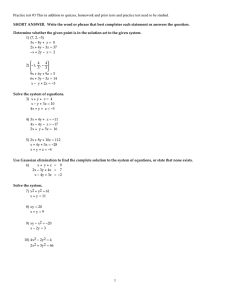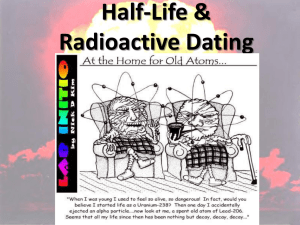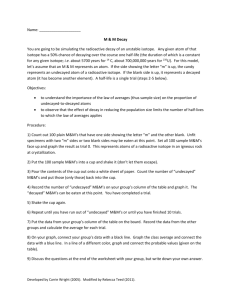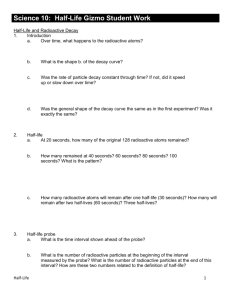M&M Radioactive Decay
advertisement
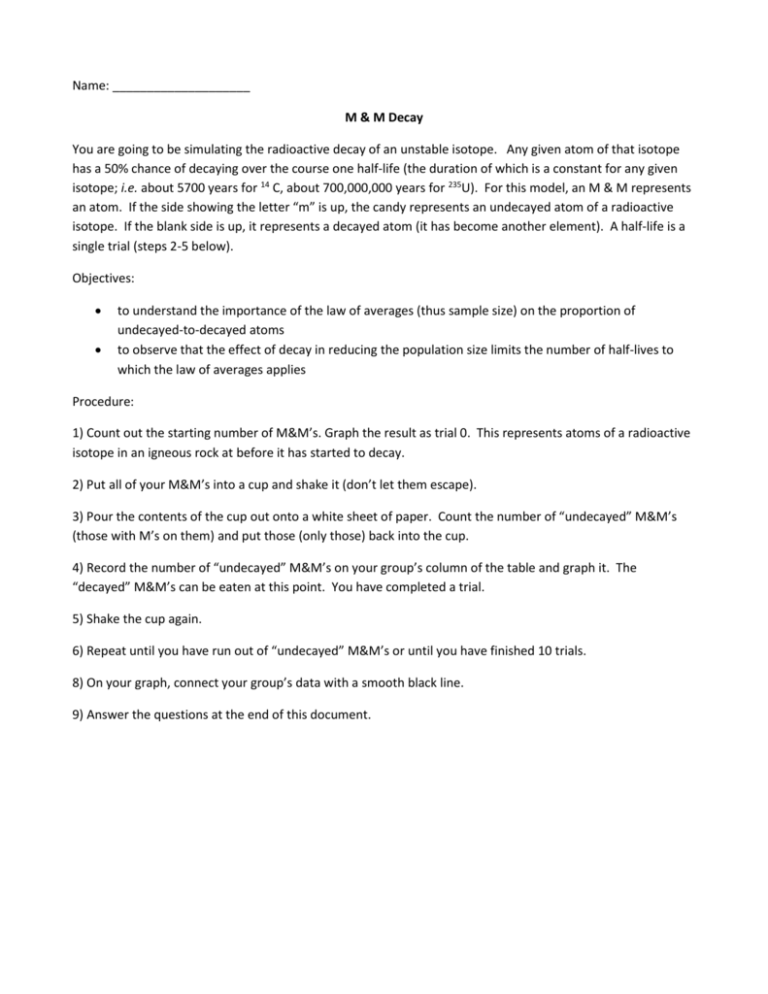
Name: ____________________ M & M Decay You are going to be simulating the radioactive decay of an unstable isotope. Any given atom of that isotope has a 50% chance of decaying over the course one half-life (the duration of which is a constant for any given isotope; i.e. about 5700 years for 14 C, about 700,000,000 years for 235U). For this model, an M & M represents an atom. If the side showing the letter “m” is up, the candy represents an undecayed atom of a radioactive isotope. If the blank side is up, it represents a decayed atom (it has become another element). A half-life is a single trial (steps 2-5 below). Objectives: to understand the importance of the law of averages (thus sample size) on the proportion of undecayed-to-decayed atoms to observe that the effect of decay in reducing the population size limits the number of half-lives to which the law of averages applies Procedure: 1) Count out the starting number of M&M’s. Graph the result as trial 0. This represents atoms of a radioactive isotope in an igneous rock at before it has started to decay. 2) Put all of your M&M’s into a cup and shake it (don’t let them escape). 3) Pour the contents of the cup out onto a white sheet of paper. Count the number of “undecayed” M&M’s (those with M’s on them) and put those (only those) back into the cup. 4) Record the number of “undecayed” M&M’s on your group’s column of the table and graph it. The “decayed” M&M’s can be eaten at this point. You have completed a trial. 5) Shake the cup again. 6) Repeat until you have run out of “undecayed” M&M’s or until you have finished 10 trials. 8) On your graph, connect your group’s data with a smooth black line. 9) Answer the questions at the end of this document. Data Table: Run Number Still Radioactive (M side facing up) 0 1 2 3 4 5 6 7 8 9 10 Questions: 1) At the end of your trials, all of your M & M’s were gone. Does this really happen during half-life? 2) Did exactly half of your M & M’s become stable each trial? 3) The time it takes for half of a radioactive element’s atoms to decay is called its ________________________________. 4) The half-life of carbon-14 is 5,730 years. A basket has 25% of it’s carbon-14 remaining. About how old is the basket? 5) Uranium-235 has a half-life of 713 million years. Would uranium-235 or carbon-14 be more useful for dating a fossil from Precambrian time? Why? 6) Does radioactive dating tell us the relative age or the absolute age of a sample? 2) What do the probable values represent? 3) Which line, the class average or your group’s results, most resembles those of the probable values? Why? 4) Why don’t we use carbon dating for dinosaur bones? (Hint: The half-life of carbon is 5730 years)
